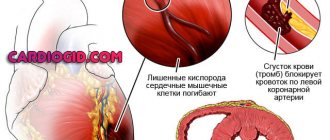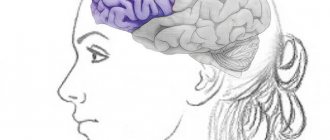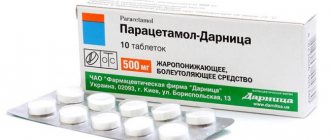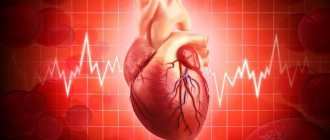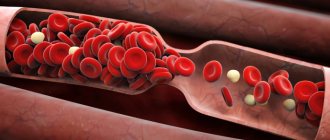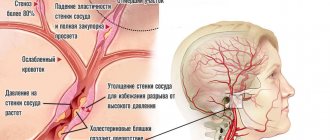Acute leukemia is a cancer of the blood and hematopoietic organ - the red bone marrow, in which normal leukocytes are gradually replaced by immature (blast) cells that are unable to perform their function. As a result, the patient develops inflammation and bleeding of internal organs, which significantly worsens his condition, immunity sharply decreases, and the nervous system is affected. In the absence of qualified medical care, an unfavorable outcome inevitably occurs. The disease is characterized by high aggressiveness: mutated cells quickly spread throughout the body, and their number grows at high speed.
Types of disease
Oncohematologists, depending on the nature of the cell pathology, distinguish two main types of acute blood leukemia.
- Lymphoblastic. Accounts for approximately 15-20% of cases. First, malignant cells affect the bone marrow, then spread to the lymph nodes, thymus gland and spleen, and then throughout the body. A characteristic feature is that mutated cells lack lipids, esterase, and peroxidase. It most often develops in children aged from one to six years and in adults after forty years. In turn, it is divided into two types: B-form with a favorable prognosis for a third of adults and two-thirds of sick children, and T-form with an extremely severe course and a sad outcome.
- Myeloblastic. The disease usually develops in adulthood and affects men and women equally. The treatment prospects are quite optimistic: partial remission can be achieved for 80% of patients, complete recovery occurs in at least 20%.
The full classification of acute leukemia includes many subtypes that differ in morphological, genetic and other characteristics that require specific treatment.
Forecasts
The success of leukemia treatment depends on many factors, but in most cases the prognosis is favorable. Acute forms are more complex, since the rapid course of the disease leaves less time for the doctor to act. In the chronic form, favorable outcomes, according to statistics, account for up to 85% of cases.
In any case, there remains a chance for a long-term remission and complete relief from the disease. In adults, the probability of a positive outcome is at least 40%, in children - up to 90%.
Symptoms
The first signs by which one can suspect the onset of the disease are the same for all its forms.
- Noticeable weight loss not associated with food restriction or exercise.
- Fatigue, deterioration in general health.
- Constant weakness, apathy, drowsiness.
- A feeling of heaviness after eating, often concentrated in the left hypochondrium and independent of the amount and calorie content of what was eaten.
- Frequent infectious diseases.
- Increased sweating, especially at night.
- Increased body temperature.
As malignant cells grow in the blood, the symptoms of acute leukemia become more pronounced.
- Pale skin, shortness of breath due to lack of oxygen carried by the blood, anemia.
- Frequent bleeding from the nose and gums, bruising on the skin and mucous membranes, in women - heavy periods.
- Dysfunction of the affected internal organs with its own specific manifestations.
- Severe pain in bones and joints.
- Increased size of the spleen and liver.
- Constant swelling of the hands and face.
Clinical signs are not differentiated in accordance with the classification of acute leukemia, so the form of the disease can only be determined using laboratory tests.
LIST OF REFERENCES USED
1. Clinical guidelines of the Ministry of Health of the Russian Federation “Acute lymphoblastic leukemia”, 2021. 2. Bernbeck B., Wüller D., Janssen G., Wessalowski R., Göbel U., Schneider DT Symptoms of childhood acute lymphoblastic leukemia: red flags to recognize leukemia in daily practice. Klin Padiatr. Nov-Dec 2009;221(6):369–73. doi: 10.1055/s-0029-1239538. Epub 2009 Nov 4. PMID: 19890789 (https://pubmed.ncbi.nlm.nih.gov/19890789/). 3. Lyengar V., Shimanovsky A. Leukemia. StatPearls. Publishing LLC 2020. PMID: 32809325 (https://www.ncbi.nlm.nih.gov/books/NBK560490/). 4. Sokolova T.A., Kotlovsky Yu.V., Dubynina E.V., Ivanovskaya O.V., Veselova V.K., Kuznetsova E.Yu. Cytogenetic diagnostics for oncohematological diseases. Academy of Natural Sciences, 2012. ISBN: 978-5-91327-211-9. 5. Clinical guidelines of the Ministry of Health of the Russian Federation “Acute myeloid leukemia”, 2020. 6. Lee JW, Chung NG The treatment of pediatric chronic myelogenous leukemia in the imatinib era. Korean J Pediatr 2011 Mar;54(3):111–6. doi: 10.3345/kjp.2011.54.3.111. PMID: 21738540 (https://www.ncbi.nlm.nih.gov/pmc/articles/PMC3120996/). 7. Dvorak CC, Loh ML Juvenile Myelomonocytic Leukemia: Molecular Pathogenesis Informs Current Approaches to Therapy and Hematopoietic Cell Transplantation. Front Pediatr. 2014;2:25. doi: 10.3389/fped.2014.00025. PMID: 24734223 (https://www.ncbi.nlm.nih.gov/pmc/articles/PMC3975112/). 8. Davis AS, Viera AJ, Mead MD Leukemia: an overview for primary care. Am Fam Physician. 2014 May 1;89(9):731–8. PMID: 24784336 (https://pubmed.ncbi.nlm.nih.gov/24784336/). 9. National Cancer Institute, Advances in Leukemia Research, May 29, 2020 (https://www.cancer.gov/types/leukemia/research). 10. Whitehead TP, Metayer C, Wiemels JL, Singer AW, Miller MD Childhood Leukemia and Primary Prevention. Curr Probl Pediatr Adolesc Health Care. 2021 Oct;46(10):317–52. doi: 10.1016/j.cppeds.2016.08.004. PMID: 27968954 (https://www.ncbi.nlm.nih.gov/pmc/articles/PMC5161115/).
La Fondation La Roche-Posay and CCI (Childhood Cancer International) make every effort to ensure that the information provided is accurate and current at the time of publication. We are not responsible for information provided by third parties, incl. those that we refer to or highlight in this publication. The information in this publication should be used to supplement appropriate professional advice in your particular circumstances.
Causes and risk factors
The etiological factors that inevitably become the “trigger” for malignant cell mutation have not yet been precisely established. However, the risks of developing acute leukemia increase significantly if:
- radiation exposure to which a person is exposed;
- infection with certain viruses that suppress the immune system (Epstein-Barr disease, T-lymphotropic virus, etc.);
- unfavorable heredity;
- smoking tobacco;
- prolonged exposure to certain chemical compounds, including medications;
- stress, depression;
- environmental pollution.
Why does malignant pathology appear?
Scientists are still unclear about some of the causes of leukemia in children. However, there are some theoretical and practical justifications for answering the question of why children suffer from leukemia. The following causes of leukemia in children are distinguished:
- Genetic predisposition. Pathological genes are formed as a result of intrauterine chromosomal changes, which produce substances that prevent the maturation of healthy cells.
- Viral infection of the body. As a result of diseases of viral etiology suffered by a child, for example, chicken pox, mononucleosis, ARVI, etc., viruses are integrated into the cellular genome.
- Immunodeficiency. The immune system cannot cope with the destruction of foreign organisms and ceases to destroy its own pathological cells, including malignant ones.
- Radiation causes mutations in blood cells. Risk factors include maternal exposure to radiation (X-rays, tomography) during gestation, as well as living in a radioactive zone.
- Adverse habits of parents, especially mothers. Smoking, drinking alcohol and drug addiction.
- Secondary leukemia after radiation or chemotherapy for another cancer.
Leukemia also develops in children due to the formation of ozone holes as a result of active solar radiation. The causes of leukemia in children also lie in genetic pathologies, such as Down syndrome, Bloom syndrome, etc., as well as polycythemia.
Stages
Oncohematologists distinguish the following stages of acute leukemia.
- Initial. It proceeds secretly and lasts from several months to several years. Diagnosed only by bone marrow examination, as blood tests show only minor abnormalities in the white blood cell count and there are no symptoms.
- Expanded. The number of immature cells in the blood increases sharply, which leads to a deterioration in health and the appearance of initial symptoms of the disease.
- Remission. Manifestations of oncopathology decrease, however, a certain number of blast cells remain in the bone marrow (with complete remission - no more than 5%).
- Relapse. The number of immature cells in the patient's bone marrow and blood increases, and his condition worsens.
- Terminal. The most severe stage of the disease, which is characterized by numerous complications of acute leukemia: vital internal organs are affected, extensive bleeding, ulceration and tissue necrosis occur.
Classification of CLL
Chronic leukemia is classified by stages and risk groups.
The stage of the disease is determined based on a clinical examination and blood test results:
- Stage A - hemoglobin level more than 100 g/l, platelets more than 100 × 109/l, and less than 3 areas of lymph nodes are affected.
- Stage B - hemoglobin level more than 100 g/l, platelets more than 100 × 10 9 / l, and more than 3 areas of lymph nodes are affected.
- Stage C hemoglobin level less than 100 g/L or platelet level less than 100 × 10 9 /L.
Classification by risk groups
For this classification, an international prognostic index was developed that takes into account the following parameters:
- TP53 mutation (17p).
- IGHV mutation.
- β2-microglobulin level >3.5 mg/l.
- Stage B/C.
- Age over 65 years.
Each of these parameters is assigned a certain number of points; when summed up, the patient is assigned to one of 4 risk groups:
- 0-1 point - group with a low risk of progression.
- 2-3 points - intermediate risk of progression.
- 4-6 points - high risk of progression.
- 7-10 points - a very high risk of progression.
Diagnostics
A patient with symptoms resembling acute leukemia is prescribed:
- blood tests - general, biochemical, coagulogram;
- removal of bone marrow from the ilium or sternum, followed by cytochemical analysis, immunophenotyping, and morphological analysis of cells;
- puncture of bone marrow and cerebrospinal fluid for cytological and histological examination;
- instrumental studies of internal organs - ultrasound, radiography, CT, MRI to assess the extent of their damage by malignant cells;
- consultations with a neurologist, otolaryngologist, ophthalmologist and other specialists.
Treatment
Since the list of the most aggressive malignant diseases includes acute leukemia, treatment should begin immediately after diagnosis. The patient is placed in an oncohematology hospital in a ward with special ventilation to remove pathogenic microflora. The main method, as a rule, is chemotherapy, which is supported by transfusion of blood components, detoxification therapy, and prevention of infections. The treatment regimen consists of the main stages:
- induction of remission - exposure to chemotherapy that destroys blast cells in order to achieve the maximum possible remission;
- consolidation - consolidation of achieved results;
- prevention of relapse - preventing the return of the disease.
In certain forms of the disease, bone marrow stem cell transplantation, performed after destruction of blasts using chemotherapy and radiation therapy, has a good effect.
The first stage of treatment takes from 4 to 6 weeks, during which time the patient receives massive therapy. At the consolidation stage, two or three courses of treatment are carried out, after which maintenance measures continue for several years, which are necessary to prevent relapses. Complete remission is achieved when the clone of pathological cells is destroyed and the normal hematopoietic process is restored.
Prognosis for chronic lymphocytic leukemia
Chronic lymphocytic leukemia is currently an incurable disease. However, the possibilities of modern therapy can significantly prolong the life of such patients, while maintaining its quality at an acceptable level. In general, the life expectancy of such patients tends to the general population indicators.
At Euroonko, treatment of chronic lymphocytic leukemia is carried out according to modern standards using the latest drugs. Experienced doctors care for patients; in difficult cases, decisions are made collectively by a council of specialists. Thanks to this approach, in each case we manage to achieve the best possible results.
Book a consultation 24 hours a day
+7+7+78
Rehabilitation
The list of clinical recommendations for acute leukemia during the rehabilitation period includes:
- measures to improve immunity;
- balanced diet;
- detoxification therapy;
- restoration of intestinal microflora;
- anti-stress psychotherapy;
- improving sleep quality.
During the recovery period, it is important to follow all the orders of the attending oncologist and complete the recommended treatment courses on time and in full.
